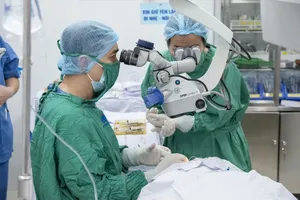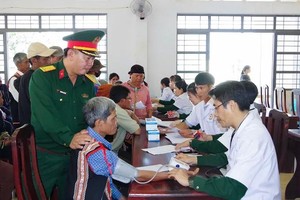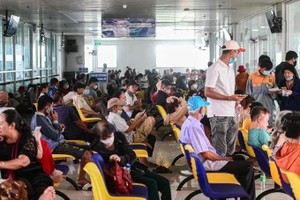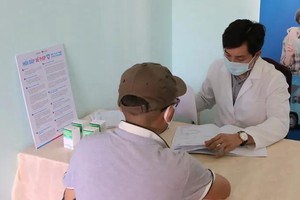The world is still facing a major public health threat called tobacco. With 8 million deaths each year, including 1.3 million from diseases related to passive smoking (or inhaling tobacco smoke), tobacco has created a serious disease burden, causing premature death and high medical costs.

Smoking - The culprit of many dangerous diseases
According to the Ministry of Health, Vietnam is in the top 15 countries with the highest smoking rates in the world, especially among men. The smoking rate among adult men in Vietnam is 42.3 percent, ranking third in the ASEAN region, just after Indonesia and Laos.
With 7,000 chemicals—69 of them carcinogenic—tobacco is responsible for 25 diseases, such as cancers, cardiovascular issues, respiratory problems, and reproductive disorders. The act of smoking not only harms the smoker but also seriously affects everyone exposed to the secondhand smoke, regardless of whether they smoke themselves.
Tobacco use is causing a serious and increasing burden of illness, premature death, as well as medical costs.
Deputy Minister of Health Tran Van Thuan said that active and passive smoking increases the risk of non-communicable diseases, the leading cause of death. Notably, in recent years, in addition to traditional cigarettes, new types of cigarettes have appeared on the market, including electronic cigarettes, heated tobacco, and hybrid products of the two kinds.
The increasing use of novel tobacco products is a worrying trend, especially in urban centers, even though their import, sale, and advertising are currently banned. A more alarming development is the use of these products as a base for mixing illicit drugs, resulting in many individuals requiring hospitalization for severe poisoning and psychosis.
According to statistics from the World Health Organization (WHO), tobacco use contributes to at least 100,000 deaths annually in Vietnam. Of these, approximately 84,500 are attributed to active smoking, while 18,800 result from exposure to secondhand smoke. The economic burden of tobacco-related harm is estimated at VND108 trillion (US$4.14 billion) per year—equivalent to 1.14 percent of the national GDP. This cost is five times greater than the revenue generated from tobacco taxes contributed to the state budget.
According to Dr. Angela Pratt, WHO Representative in Vietnam, tobacco prices in Vietnam are currently very low. With over 15 million smokers, the crisis of illness and premature death is exacerbated.
He warned that with the slow decline in smoking rates, Vietnam will struggle to meet the target of reducing smoking prevalence set in the National Strategy for Tobacco Harm Prevention by 2030.
Tobacco use also contributes to increased poverty as low-income families spend money on tobacco instead of investing in their children's education and other needs.
Dr. Angela Pratt stated that tobacco use threatens Vietnam's aspiration to become a high-income country by 2045. Raising tobacco taxes to increase tobacco prices is the quickest and most cost-effective way to reduce tobacco consumption. Higher tobacco prices will encourage smokers to quit and deter young people from starting to smoke. Tobacco taxes can protect both the current and future generations of Vietnam's workforce.
The WHO Representative recommends that, in addition to the current tax rate of 75 percent of the ex-factory price, an absolute tax should be implemented on a schedule to reach VND15,000 per pack by 2030. These changes will help reduce the smoking rate among men to below 36 percent by 2030, in line with national goals, and will lead to a decrease of 3.2 million smokers by 2030.
Adjusting this tax rate will significantly increase annual tax revenue, adding an additional VND29.3 trillion by 2030 compared to 2020.
Dr. Nguyen Tuan Lam from the WHO office in Vietnam believes that increasing tobacco taxes not only benefits public health but is also expected to be an effective tool for boosting government revenue. This is a "win-win tax" that reduces tobacco consumption while generating funds to cover free primary education, provide free medical care, or invest in the primary healthcare system.
























